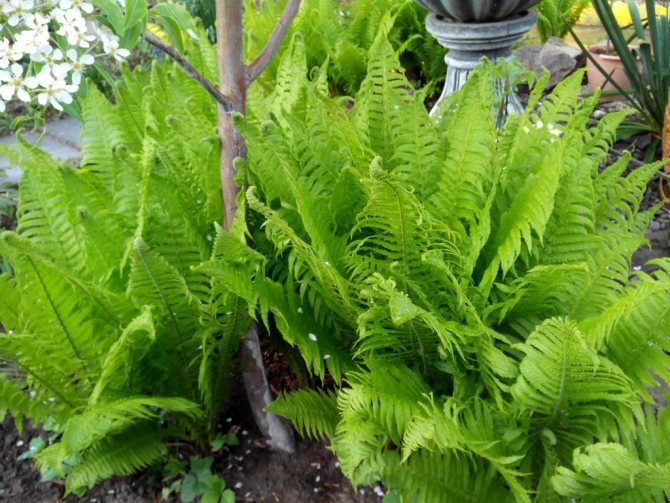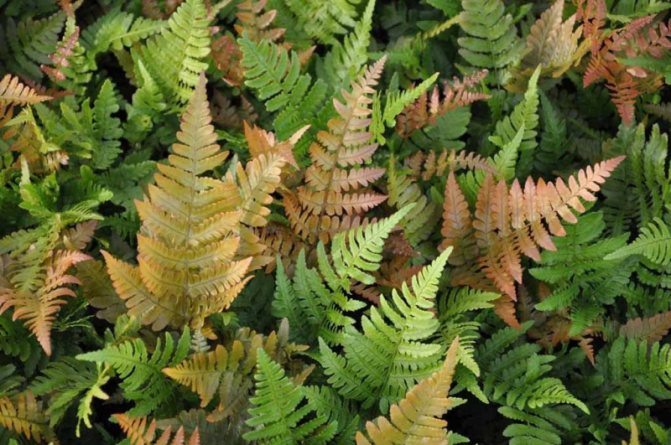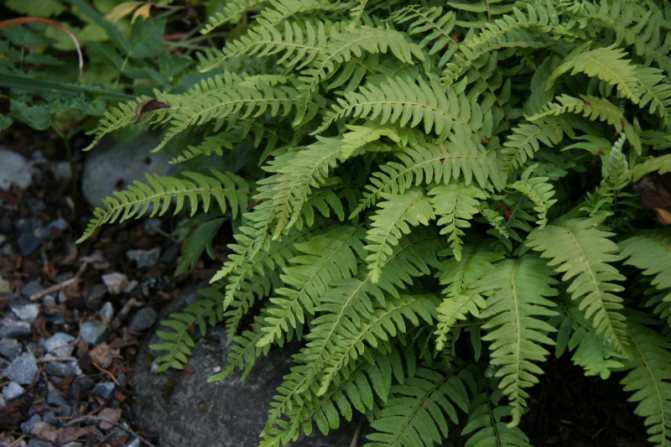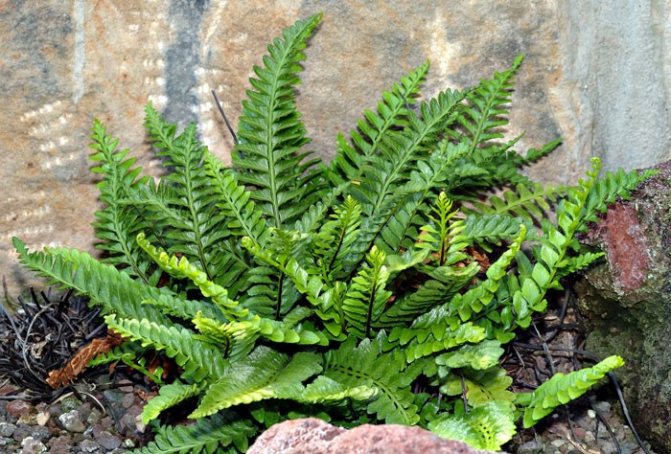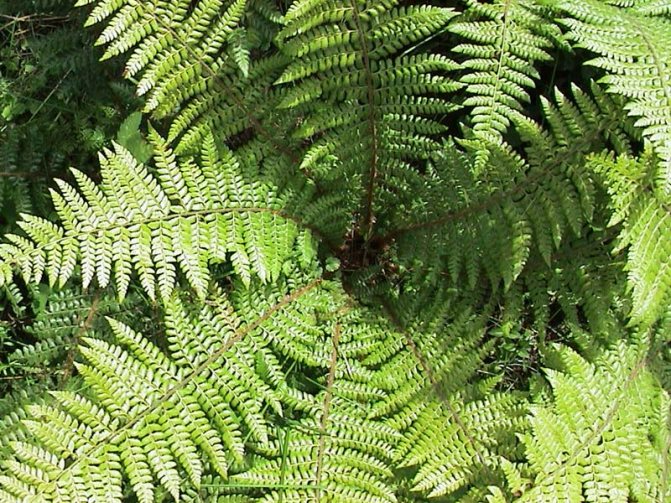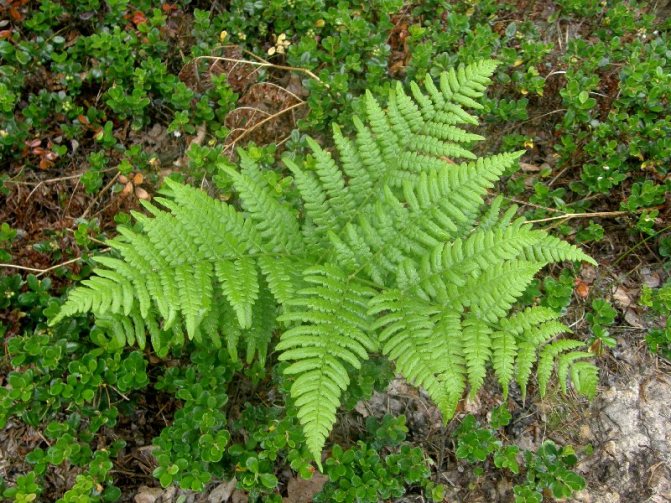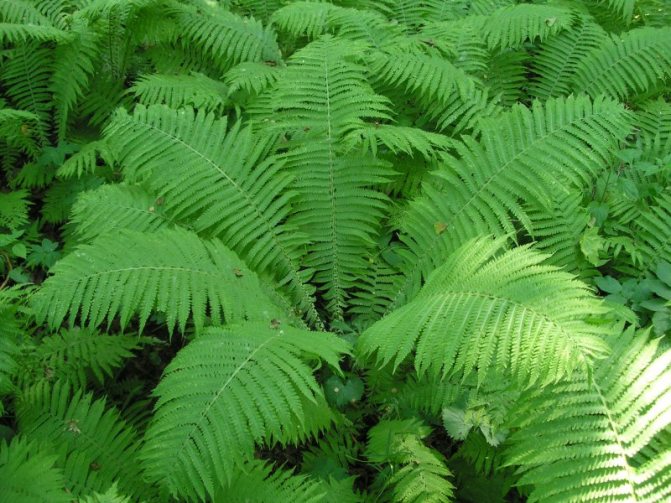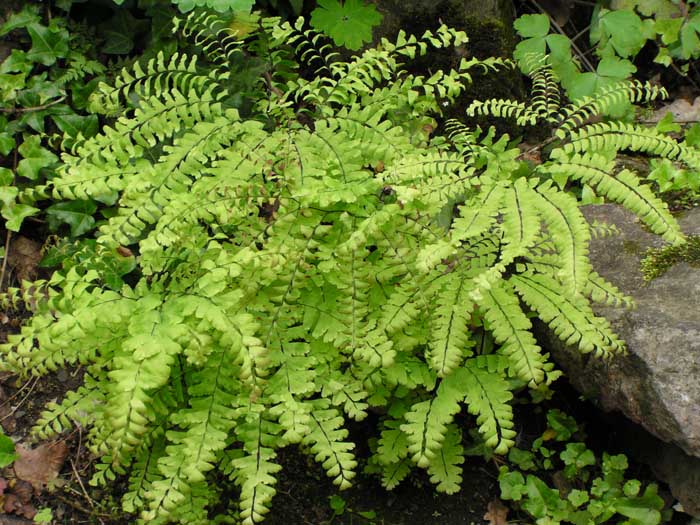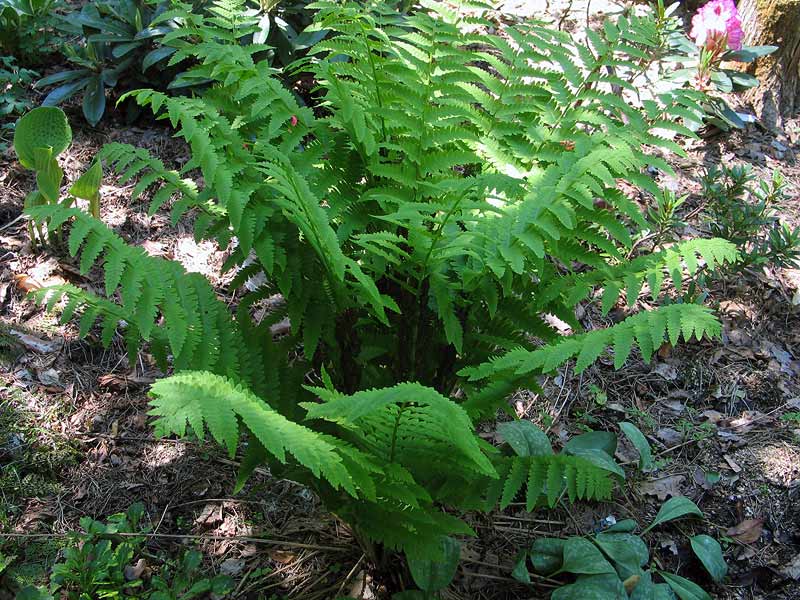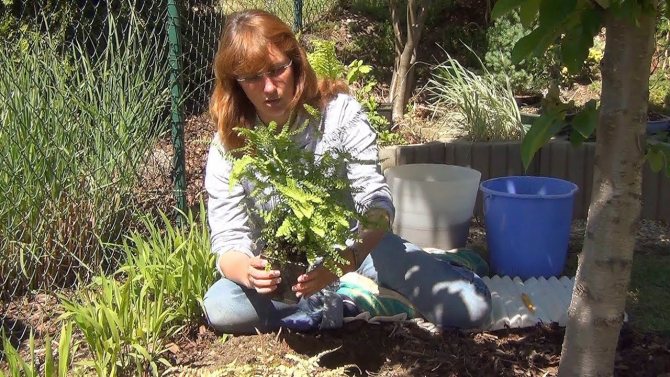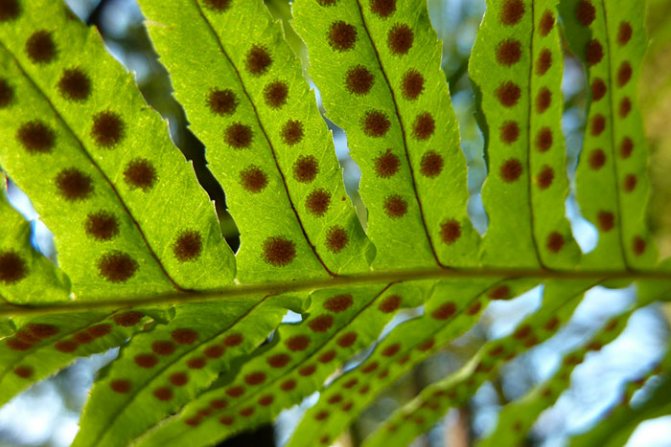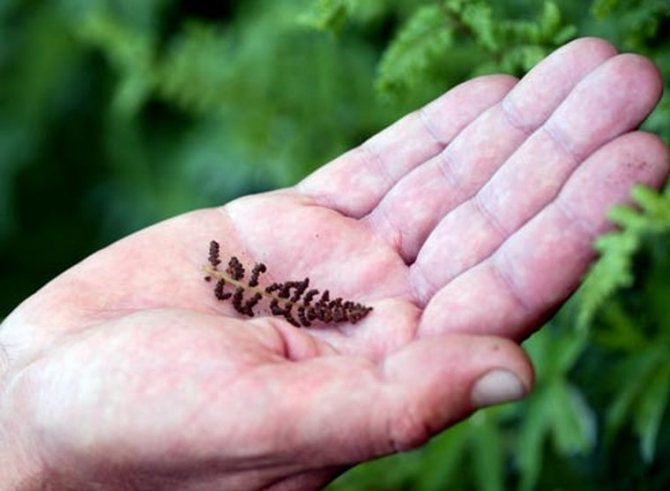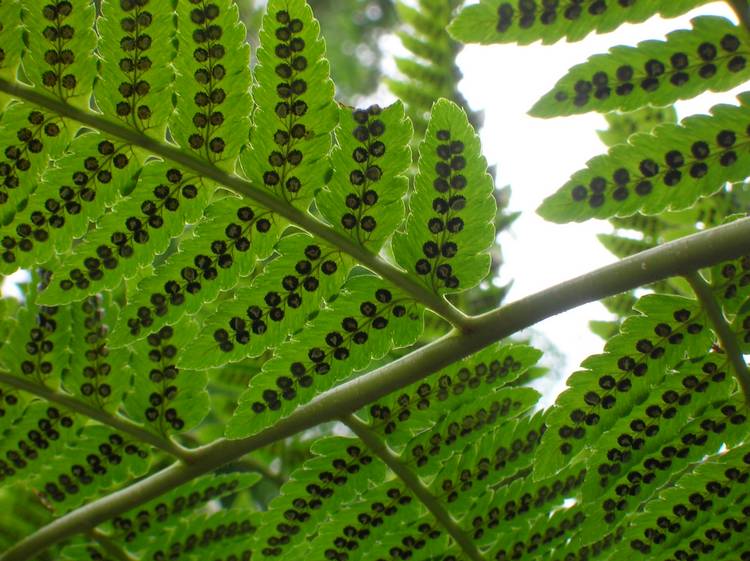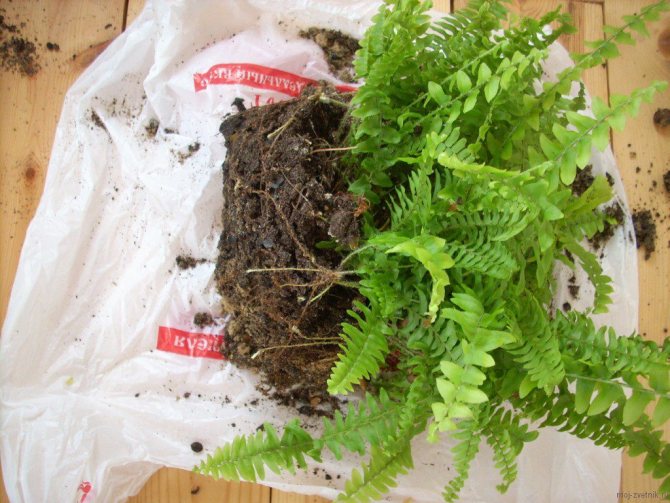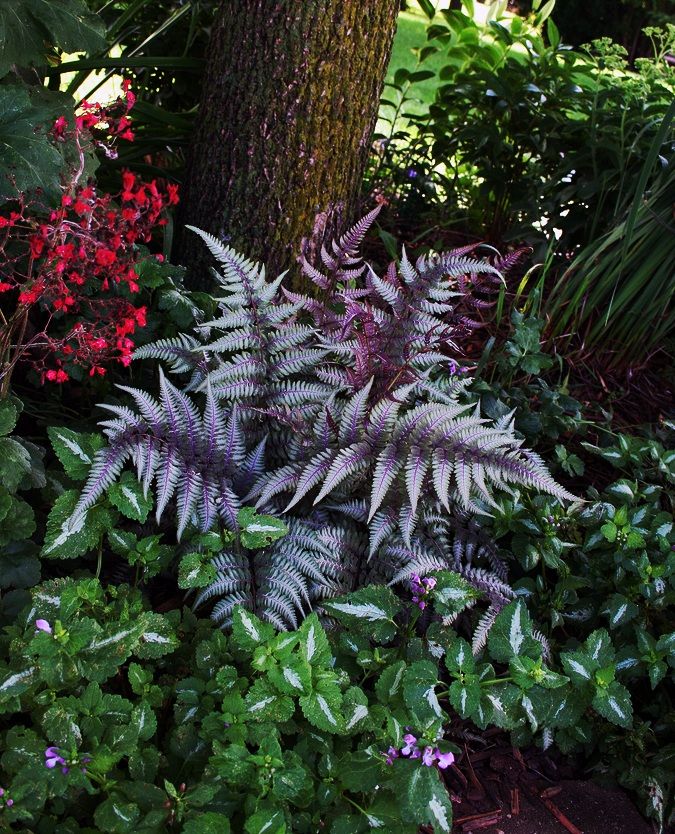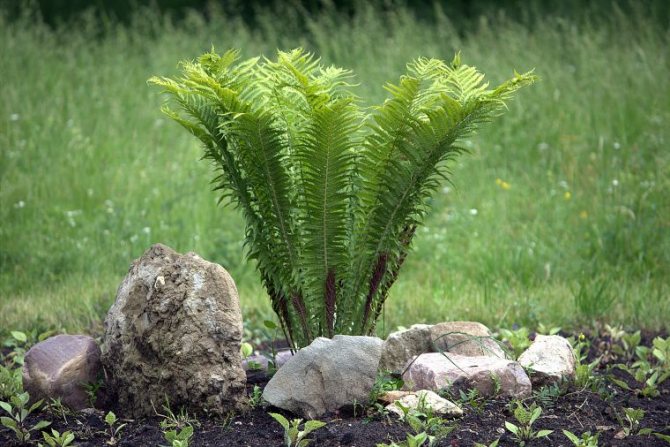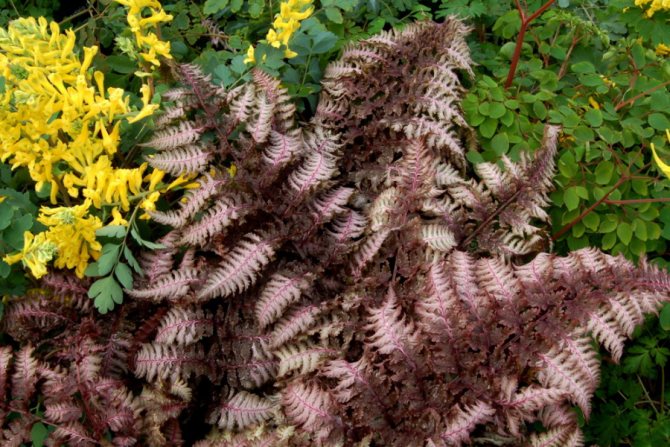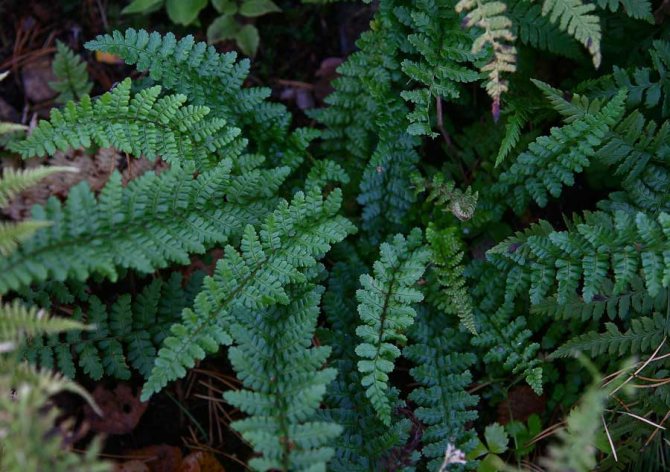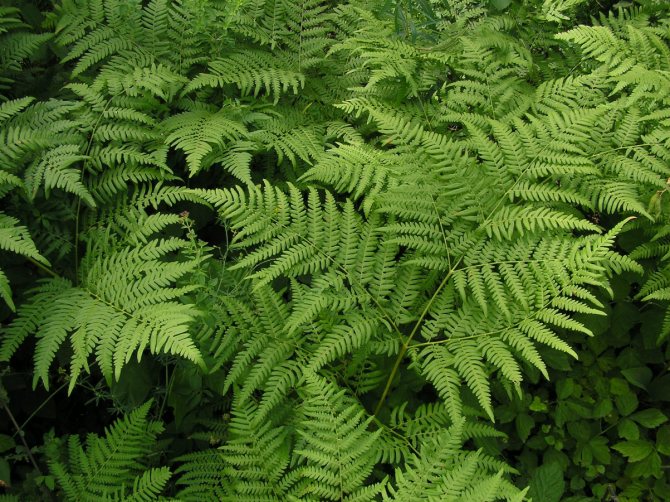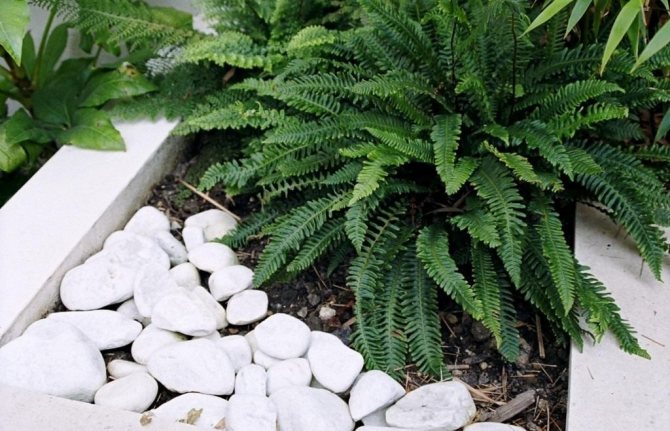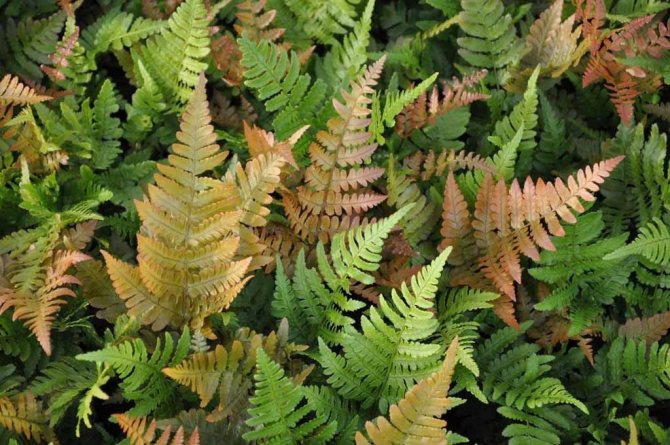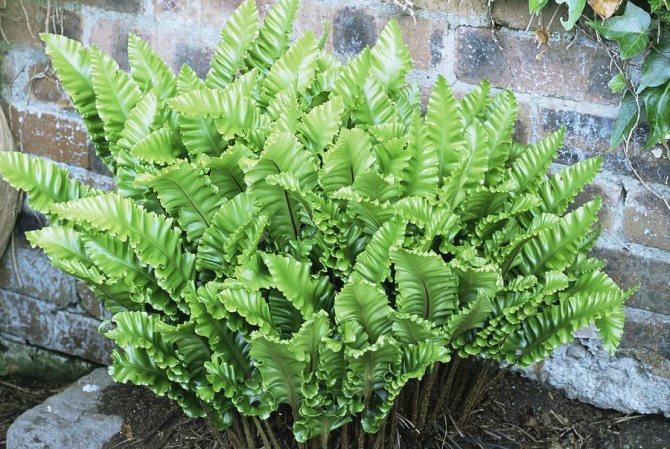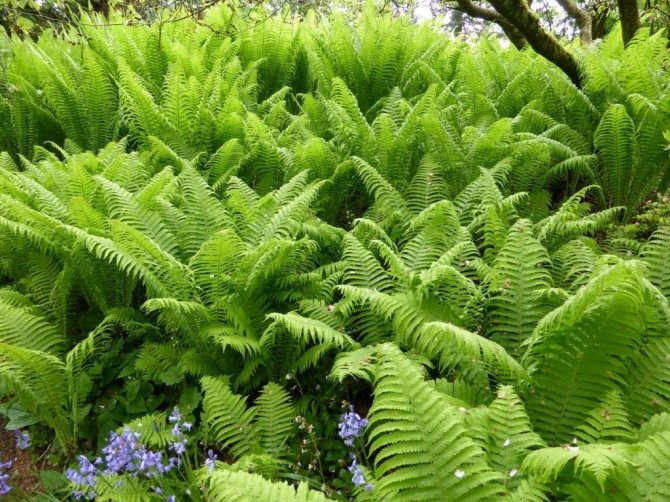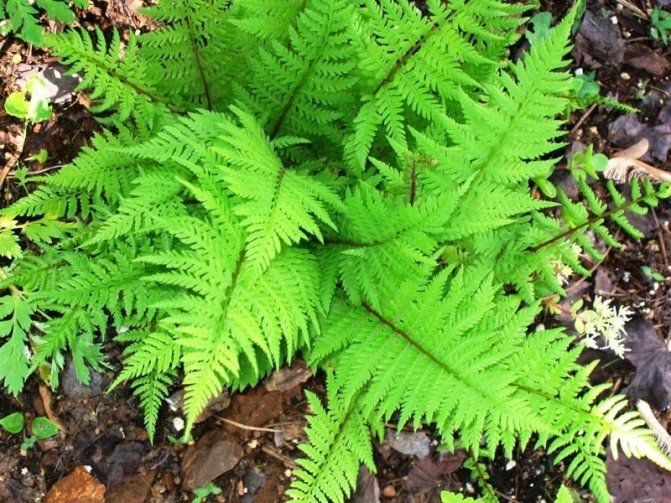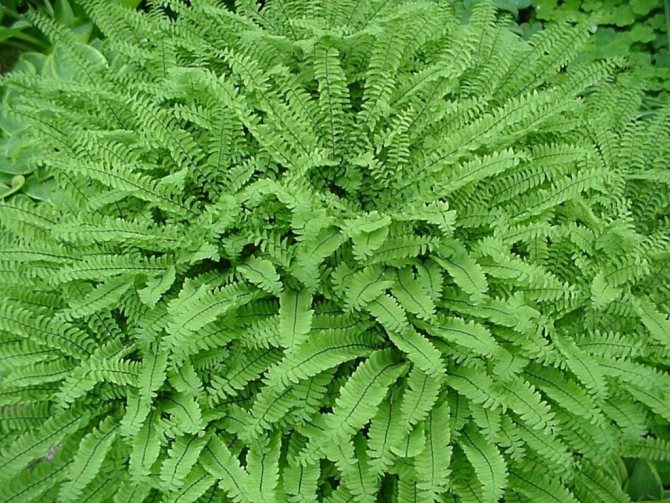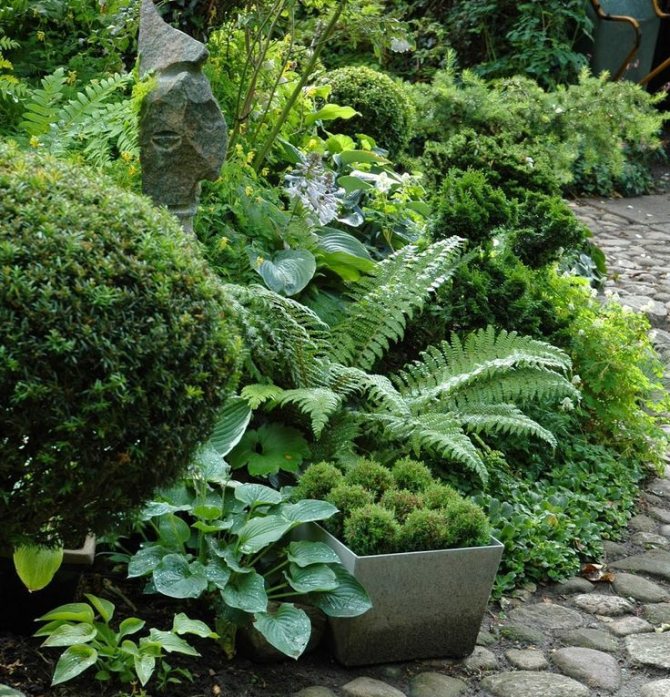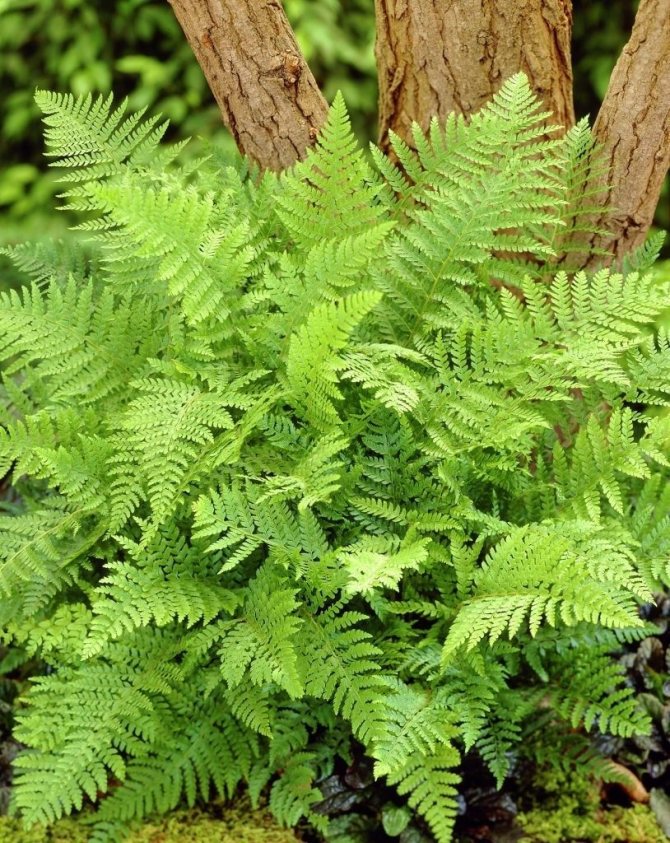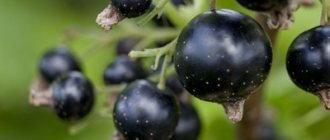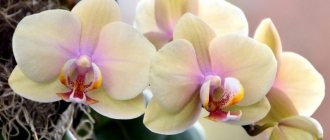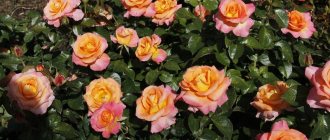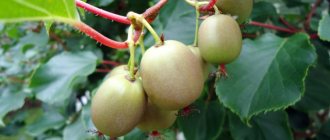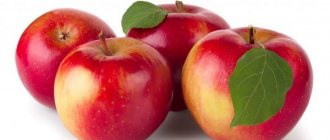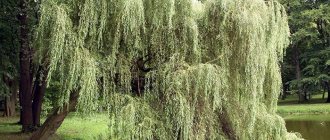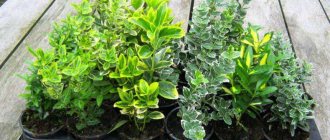Fern is one of the famous plants. Many people first met him thanks to the legend about the Kupala night, in which the fern supposedly blooms. It says that if a flower is found on this night, good luck awaits a person. Whether this is true or not, no one knows. There is no doubt about it, this is an amazingly beautiful plant that can beautify any yard and garden.
It doesn't take too much for this - learn the rules of its cultivation... However, don't expect to see the fern bloom. At least, not a single case is known that someone succeeded. However, even this circumstance does not stop gardeners and simply lovers of wild plants, who very often use it as one of the main elements of garden decor.
There are about 10 thousand species of fern in the world, thanks to which every gardener can choose the variety that he likes best. But in any case, you will not be able to appreciate its beauty without knowing the nuances of growing ferns in the garden.
Description of the culture, its known varieties and varieties
There are about 200 of these wonderful plants known in the world, most of which are inhabitants of tropical forests. If you look in general at the various types of ferns, then the following biological features of the plant can be noted:
- Perennial herbaceous shrub.
- Externally, the fern can look like a low grass, and a rather impressive tree size.
- Under the ground is a medium-sized creeping rhizome.
- Above the surface is a dense stem made of wired tissue.
- The culture has no real leaves. The so-called fronds - primitive leaf plates - extend from the stem. Their formation occurs in the spring in the roots.

- Reproduction occurs with the help of spores in brown bumps, clearly visible in the photo of the underside of the leaves.
- Ferns are ideal plants for shady areas.
- Planting is possible both outdoors and in flowerpots.
Attention! Growing thermophilic representatives in the middle lane is possible only in a room.
In the open ground of a temperate climate, the following species and varieties feel great:
- Common ostrich - it can be called the most common type of fern found in gardens. This species requires minimal care.
- Common bracken - young shoots of this species are eaten.
- Male dwarf - often found in the forests of the middle zone.
- Cochid fern - most of its varieties have an unusual reddish color. For example, the leaves of Burgundy Lace are wine-colored. These varieties look especially catchy in the fall.


Which fern is suitable for growing in a summer cottage


Photo of fern cultivar Asplenium
There are many varieties of fern. If you wish, you can experiment and plant any variety in your garden. But most likely the exotic plant will not withstand the difficult climatic conditions of the middle zone and will die. These ferns are best grown indoors. And for growing in the garden, more hardy varieties are suitable, the viability of which has been tested empirically and confirmed by many gardeners.
Asplenium - small bushes that amaze with their beauty from mid-spring and literally before the first snowfall, autumn weather does not frighten them.
Kochedyzhnik female - can grow up to seventy centimeters, is not afraid of frost. It can grow in one place for ten years without losing its decorative effect.
Kochedyzhnik nippon - this plant strikes with a beautiful silvery-green color of leaves with purple veins. In order for this contrast to look more noticeable, the fern must be in the sun in the morning.
Ostrich ordinary - on the territory of our country, this is the most widespread variety. It is not capricious and requires almost no maintenance.


Photo of a fern variety Ostrich ordinary
Shieldworm - not only beautiful, but also unpretentious and frost-resistant.
Osmund, Maidenhair, Mnogoryadnik - rather high varieties, beautiful and unpretentious, but at the same time they do not tolerate the cold season. Therefore, it is recommended to grow them in the southern regions.
Bracken - frost-resistant, beautiful and unpretentious variety. However, planting it in a summer cottage is not recommended, since the plant contains poison that can harm excessively voracious or curious pets.


Photo of a fern variety Orlyak
How to plant and care for a plant
Although the plant is not moody, certain requirements must be met to obtain beautiful, lush bushes.
- The open ground where the planting will take place should be in the shade. In the sun, the plant withers and can quickly die.
- The soil in the place of the planned cultivation should be loose, since the roots of the plant are demanding on the presence of air.
- Absolutely all varieties prefer moist soils. Therefore, plant care should include abundant and frequent watering. In this case, stagnation of water is unacceptable. Landing should be accompanied by a good drainage device. Mineral fertilizer can be added to the water for irrigation 2-3 times per season.
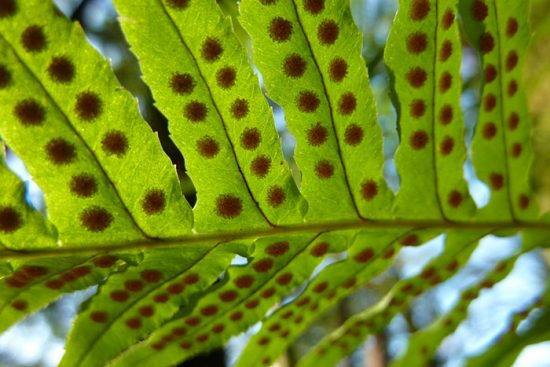

- It is advisable to plant ferns in a flowerbed in the open field in the spring, as soon as fronds begin to bloom. In warm weather, with good care, the plant takes root well.
- Planting should take place immediately after digging out the appendage, so that the roots do not have time to dry out and the leaves wither.
- The main fern care is timely watering. This should especially be monitored in the first year after planting and during hot, dry periods.
It is very good if it is possible to mulch the soil under the plant with coniferous needles. This will keep the soil loose and moist, which will have a positive effect on strengthening the root system. Of course, this includes removing old or broken leaves regularly. This will not only give the plant an aesthetic appearance, but also contribute to the growth of new wai.
Such varieties as leaflet and kochedzhnik are not particularly frost-resistant. For the winter, they need to be covered with leaves or a small layer of peat.
Top tips for garden fern care
The main condition for the rapid and correct growth of any garden fern is sufficient soil moisture.
Once every three to four years, the plant needs to be updated and thinned out. Remove old, diseased and damaged leaves, but very carefully. If you have planted non-frost-resistant ferns, then do not forget to cover them for the winter with peat or dry foliage. Here, perhaps, are all the basic tips for caring for a garden fern. Plants do not need specific feeding, and pests are indifferent to it.
Important! Take good care of the fern roots - they regenerate very slowly.
How to water a garden fern


In the first year after planting, the plant should be watered regularly.
Pay special attention to watering during spring growth and summer drought.When watering, remember to spray the leaves and not just moisturize the fern roots. It is good then to mulch the soil around the plant with coniferous paws.
This will help the soil retain moisture longer and strengthen the fern roots.
Soil care
Fern soil should be constantly loose and moist.
Make sure that the water does not stagnate or rot in the soil. These are the top tips for caring for the soil in which your garden fern grows.
Fern feeding in the garden
Fern feeding with fertilizers is not a prerequisite, but an important condition if you want to provide plants with useful substances, to create conditions for full growth and development.
It is best to feed the fern in early spring, when young shoots are just starting to grow. It tolerates organic and inorganic fertilizers equally well. If the plant withers, the leaves turn yellow or dry out, then it simply does not have enough minerals and nutrients. It is necessary to purchase a liquid mineral fertilizer and, together with water, improve the condition of the soil.
Fern transplant
Gardeners are reasonably interested in the question of when is it better to transplant a fern?
This is usually done in the spring, when the plant begins to grow. If you are replanting the fern at a later date, carefully dig it up to avoid damaging the root system. Try to keep the soil on the roots, and water the plant abundantly after transplanting. Since the soil settles after planting, dig a shallow hole. The hole should be such that the rhizome is freely placed in it when the roots open up.


Place the fern in the hole so that the top of the rhizome, where new leaves will grow, remains on the surface of the soil, fill it with water. Fill the earth directly into the water so that no air gap remains, and the roots are well consolidated with soil and do not dry out.
Ferns thrive best in organic land. To do this, when replanting ferns in the garden, instead of plain water, pour them with ArganiQ for the garden at the rate of 300 g per bucket of water. This procedure will help the fern to painlessly adapt to the new place. A little patience, and transplanting a garden fern will not be a difficult procedure for you.
Important! When transplanting rock ferns, in any case do not deepen the hole - this is destructive for them.
Fertilizing, feeding, and fern propagation methods
Ferns do not need to be fed on fertile soils. Fertilizer on depleted soil is best applied in advance, when preparing a flower bed in the fall. Organics and mineral complexes containing nitrogen are suitable.
When planting a fern, a little peat can be poured into the hole, which will act as fertilizer and baking powder at the same time.
Ferns are propagated by gardeners in three ways:
- separation of root suckers;
- budding;
- disputes.
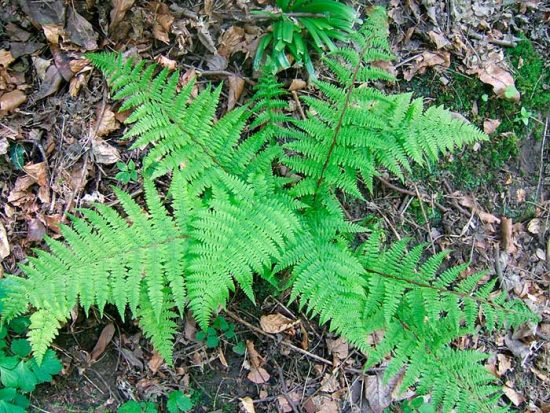

The first method is the fastest and easiest. It is most commonly used in the propagation of all varieties. The main thing here is good watering after the separation of the offshoot.
The second method is more laborious and is suitable only for some species, for example, a multiforme that can form buds on leaves. They are detached and germinated in moist moss. A fairly common method is reproduction by spores. They are collected by scraping off the sheet, dried and scattered over the surface of the substrate. The care consists of daily spraying. After a month, the spores germinate and in the next season you can already plant the plants in the ground.
Why does the garden fern turn yellow?
Proper care of a garden fern: why the plant turns yellow and withers. In today's article, we will analyze in detail for what reasons the garden fern turns yellow and what should be done to prevent the plant from dying? Read on if the topic is relevant to you.
Garden ferns have won the love of flower growers not only because of the mystical aura: is it possible to keep an indoor fern at home? The plant fits perfectly into any environment. Garden ferns add a special charm to the plot. Evergreen look, beautiful shoots, cool feeling. In order for the fern to always look beautiful, it must be properly looked after. In case of violations, modifications begin to appear, for example, fern leaves (frond) turn yellow.
Why does the garden fern turn yellow:
- Increased air temperature;
- Irrigation disorders;
- Exposure to direct rays;
- Few nutritional ingredients;
- Humidity + temperature drop;
- Dry air;
Fern prefers water-intensive soil mixtures and locations closer to trees or shrubs. The plant will feel uncomfortable in an open area, being exposed to direct light from morning to night. Excess moisture and constant temperature fluctuations also lead to a change in the color of the leaves. An equally important role for maintaining a juicy, rich green hue is played by the composition of the soil mixture, which must be thought out in advance, and the amount of fertilizer that is applied to the soil.
The composition of the land for planting a fern:
- 1 part sand;
- 2 pieces of garden land;
- 2 parts of peat;
What plants do ferns in the garden combine with and what diseases and pests threaten them
Due to the beauty of openwork leaves and bushes in general, ferns take pride of place in the design of the site. Photos of such compositions are very natural and beautiful.
Attention! The fern rhizome quickly spreads over the site, so the installation of limiters is mandatory.
The combination of fern with lilies and arrowhead by the pond will give the plot a special charm. On shady rock gardens, you can place low varieties next to flowering creeping plants, for example, periwinkle.
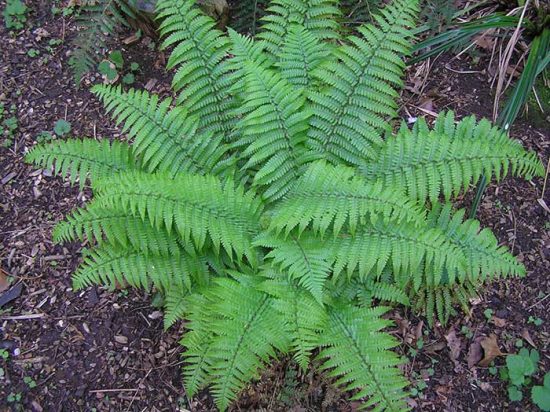

We can say that the combination of ferns in the garden is possible with any shade-tolerant plants: hosts, astilbe, ditch, etc.
The plant is not affected by diseases, if the rules of care are followed. Of the pests, slugs and caterpillars can be noted, which damage the leaves.
The fern can be called a bright decoration of a shady area that does not require much attention. Its cultivation is available to absolutely everyone, even to inexperienced gardeners.
Output
Now that we have figured out everything about planting and caring for a fern in the garden, let's summarize.
- Choose a completely shaded area or partial shade. In summer, the plates will burn in the sun and look unattractive.
- Prepare loose, lightweight soil. To transplant a forest plant, take some land where it grew.
- Dig a hole slightly larger than the root system.
- Add compost or a pinch of nitrogenous fertilizer to the bottom.
- Place the seedling in the hole, straighten the roots and cover them with earth. A flower from the forest must be planted in a permanent flower bed before it begins to wither.
Do not forget to regularly water, loosen the soil and the delicate, emerald greenery will delight you for many years. Do not leave the bush in flowerpots for the winter on the site - transplant in September in open ground or bring it indoors. Now you know how to plant a fern correctly, it remains to choose a variety and wait for the right time for gardening.
Popular varieties
To succeed in cultivating a fern in the garden, it is worth choosing the right type of this plant.
Female kochedyzhnik
This culture is characterized by dissected leaves that form bundles. Under natural conditions, it grows in swamps, forming hummocks. The size is determined by the type of crop and can reach 30-70 centimeters. The roots of the bush are short and thick.
Orlyak ordinary
This plant reaches 70 centimeters in height.It develops well in dry soil, which contains a small amount of nutrients. The culture is characterized by long horizontal leaves resembling eagle's wings. The plant contains poisonous substances, therefore it is dangerous for pets. Moreover, for people, this type of fern is absolutely harmless.
Male shieldworm
Under natural conditions, the culture develops in the shade and reaches 0.3-1.5 meters. On the seamy side of the leaves, pores that resemble a shield accumulate.
Common ostrich
This culture is distinguished by feathery leaves that resemble the openwork pattern of ostrich feathers. They can be up to 1.5 meters in size. With the arrival of spring, the leaves become like a rolled cocoon. Then they bloom and resemble a luxurious cone. A vertical root system requires systematic loosening and mulching.
Asplenium
The culture is popularly called Kostenets. Most Aspleniums need warmth. However, there are also frost-resistant crops that can withstand temperatures as low as -18 degrees.
Nested asplenium
This plant is capable of developing even without soil, since under natural conditions it takes root on leaves and trunks. The culture reaches 1 meter in size. In flower shops, you can find its dwarf species.
Onion-bearing asplenium
It is a deciduous fern native to New Zealand. It is permissible to grow it in the garden. In this case, it is recommended to cover the root system with dry leaves. Also, the bush can be dug up and kept in the cellar until spring arrives. The plant reaches 60 centimeters in length.
Fern varieties
There are many varieties of this amazing plant, but they all require similar conditions of detention: a damp and shaded place, space. Garden fern - cultivation does not require special knowledge, in addition, under favorable conditions, it will go into a wild form and will grow well without human intervention. Garden shops today offer a good selection of ferns, but not every species of this plant is able to survive in every climatic zone. For cold and temperate regions, the following varieties are preferred:
Fern maidenhair
The most suitable for the climatic zones of Russia is the Adiantum Stop-like fern and Venus hair. The first subspecies takes root especially well in the Far East, in the forests of the Amur Region and Primorye. As for the Venus hair, it feels favorable in the Crimea and the Caucasus region near mountain rivers and water bodies. Hair Venus is considered one of the common types that grows well on the territory of a private farm, as well as in natural conditions. It is distinguished by its delicate dissected leaves, which grow on petioles, similar to a thin wire. Leaves grow like bunches from a powerful root stem. Its height does not exceed 0.5-0.7 m. On the bottom of the leaves there are spore sacs, they look like dark spots.


Fern fern male
It has a wide variety of subspecies, it can grow on any territory of Russia. Moisture conditions will be more suitable for him. It is good if there is a reservoir nearby. A perennial plant at mature age reaches no more than 0.5 m. It has a short, but thickened rhizome, covered with scales on top. The color of the leaves is close to dark green. On the back of them are black spores in a row. The leaves have an elongated shape. They are attached to erect petioles.


Bracken fern
It is an extremely useful plant. It will always come in handy in the household. Many owners of household plots prefer this particular fern. It has an attractive aroma due to its high tannins content. Due to this property, fern leaves are used for storing garden crops.Vegetables, fruits and berries are spread on the leaves of Orlyak, then the crops are covered with them. The shape of the branches of the bracken fern is lush and spreading. Leaves are hard, triple-pinned. In height, it is no more than 0.5 - 0.6 m. The root is branched, horizontal. The plant is naturally unpretentious and can grow even in the most depleted areas. Below, if you look closely at the lower pairs of leaves, you can see a nectary. It attracts ants. Spores are located on the bottom of the sheet, for additional protection, its edges are curled
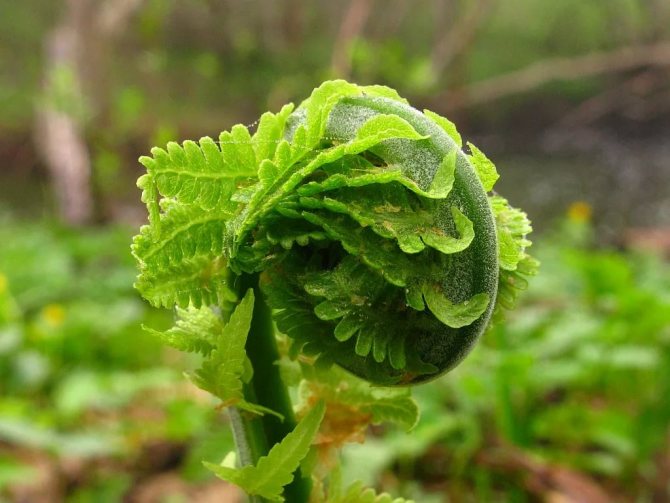

Fern ostrich
This species is characterized by upright erect leaves. They are quite dense and can reach a height of 2 m. Leaves grow in rows in a circle. In the center there are smaller ones - spore-bearing. Dark spore points are attached to their back. The root system is underground, rapidly developing. Fern Ostrich is of several types: Eastern and Common. The common Ostrich is not afraid of frost, which cannot be said about the East. A fragile plant does not tolerate winds and needs constant moisture. In shape, the fern resembles a bouquet of ostrich feathers, hence its name. Gardeners often grow this species for its decorative effect. The leaves look great in floral arrangements.


Fern
There are several types: Female, Chinese, Nippon, Burgundy Leys. All ferns from this subspecies are shade-loving and can grow up to 10-15 years in one place. The soil must be well-groomed and fertilized in advance. The kochedyzhnik is not afraid of frost. The female Kochedzhnik has green shoots. They are very delicate to the touch and have a feathery complex shape. Petioles grow up to 1 m in length. The root of the plant is short and thickened. The Chinese Kochedzhnik, like the female, reaches a height of 1 m, but the color of its leaves has an unusual reddish tint. The Nippon plant also has an exotic purple coloration. Burgundy Leys is shade-loving. The darker its habitat, the richer the wine color of the leaves. It is characterized not only by the reddish color of the foliage, but also by the burgundy color of the petiole.
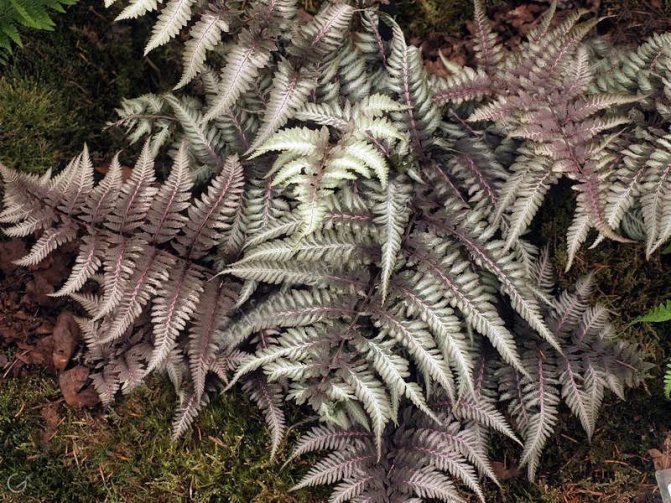

There are many other fern species.
How to choose and prepare a place
To succeed in growing a crop, it is recommended that you choose the right site for planting it.
Lighting
The culture develops normally in shady places. At the same time, prolonged absence of light negatively affects the state of the leaves. They turn yellow and dull. This does not harm the culture, but it provokes a deterioration in its decorative properties.
The best option for a fern is diffused sunlight. In this case, it is advisable to avoid direct sunlight.
Ground requirements
Ferns require loose soil that absorbs moisture well. To avoid stagnation of moisture and the development of putrefactive processes in the roots, river sand will be required. The excavated soil should be mixed with peat and sand. In this case, it is recommended to maintain a ratio of 2: 2: 1.
Garden fern: general characteristics
Each fern variety is unique in its own way... These plants differ not only in size, but also in the cycle and form of life, as well as in structural features. What unites them is their appearance, which helps to recognize the fern in them. Few people know that this is the largest group of spore plants. They have many features. They not only have leaves of various shapes, but in addition they are resistant to excess moisture and naturally plastic plants.
Reproduction methods
There are many fern breeding methods, each with specific characteristics.
Disputes and division
Reproduction by spores is considered a rather complex and painstaking method. To do this, in the fall, you need to cut off the ripe spores with leaves, and in January place them in a special substrate.To prepare it, it is worth mixing peat, leafy earth and sand in a 2: 1: 1 ratio.
It is recommended to place the spores on top and moisten with a spray bottle. Cover the container with glass. Sprouts can be expected 2 months after planting.
When breeding varieties with long rhizomes, it is enough in early spring to cut an adult plant into 2 parts. If there is no risk of recurrent frost, the crop should be planted in the ground. In this way, bracken, ostrich and other plants can be propagated.
Rhizome mustache
This method is not used for all fern varieties. So, cordial neurolepis has a mustache, which is presented in the form of aerial processes. They can be buried in the ground and watered well. Thanks to this it will be possible to get a new culture.
Brood buds
This method is considered the most time consuming and least productive. For planting, it is worth separating the top of the leaves and placing them in peat or moss. They must be moisturized every day. Once the buds are rooted, they can be transplanted to a permanent location.
Ready bushes
This is the simplest and most popular method. To do this, it is enough to find a suitable bush in the forest and dig it up. In this case, it is important to wrap the roots with earth so that they do not dry out during transportation. It is recommended to moisten the plant a little. At home, it should be divided and planted on a permanent site.
How to care
There is nothing difficult in growing a fern - they say that everywhere. But why then does it not take root in some areas? Perhaps the fact is that you planted it too deeply, damaged the root, forgot to drain under the garden with it, or delayed planting. Of the pests, only slugs and caterpillars are dangerous - they eat leaves. If you follow simple conditions, the plant is not threatened with any diseases.
Care instructions
- Periodic loosening of the soil.
- Abundant watering once every 5-7 days. In the heat, the rate can be increased.
- Mulching the soil with coniferous needles, sawdust, bark or wood chips. Mulch helps to retain moisture, and protects from the cold in winter. The layer should not be too thick.
- You do not need to trim the leaves - the lower ones die off themselves and mix with the mulch. Only damaged plates need to be removed: broken or diseased.
- It is not necessary to fertilize the flower bed, but if you see that the flower turns yellow, it may be due to a lack of nutrients. In this case, buy a liquid nitrogen fertilizer.
- Only some varieties are sheltered for the winter: kochedzhnik, asplenium, maidenhair, chistyust, mnogoryadnik. The shelter is made from fallen sheets or geotextiles.
- Seedlings from flowerpots for the cold season are removed indoors or transplanted into open ground.
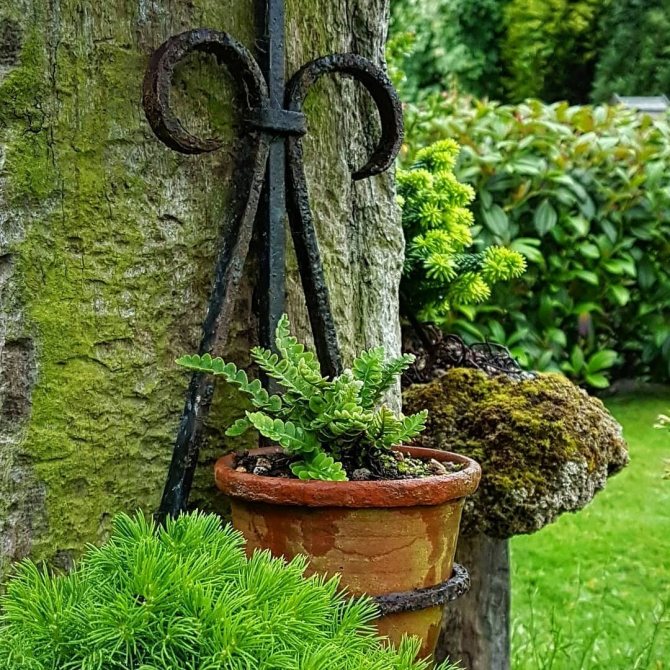

Instagram @whereswallytheparrot Instagram @plantsmangreen
How to propagate a flower
- Rhizome mustache. Some varieties have aerial, creeping processes. They are dug in to a depth of 8-12 cm and watered well.
- Division of the bush. The season for this is spring. Divided bushes may not take root in winter, and they will have time to get stronger over the summer.
- Brood buds. On the lower part of the plate, some varieties have tubercles. They need to be separated, placed on wet peat or moss, covered with glass and left in warm and dark. After a couple of months, the buds will take root and you can move them outside.
Open ground planting scheme
Before carrying out planting work, it is worth evaluating the size of the plant. With this in mind, prepare a hole. For large varieties, its diameter should be 50 centimeters, and the depth should be at least 40. It is recommended to fill the depression with the same soil in which the bush grew before transplanting. This makes it much easier to adapt.
If the finished plant was purchased from the nursery, it is worth adding peat when planting in the recess. However, it is not recommended to use too much fertilizer. After the end of planting work, the soil is mulched with cut grass or sawdust. This helps to avoid moisture loss.
Landing features
One of the important questions to be solved by gardeners planning to plant a fern in the garden is find a suitable place for him... It should be located in the shade and provided with sufficient diffused sunlight. If you plan to plant a fern dug out of the forest, try to keep as much soil as possible on its roots in which it grew. In this case, the plant will take less time to settle down in a new place and start growing.
Care features
In order for the plant to develop normally, it needs to be provided with full and high-quality care.
Watering mode
When growing a fern in the garden, it is worth monitoring the timely moistening of the soil. Watering should be regular. It is carried out every 5-7 days. With the arrival of autumn, the frequency of watering is reduced, since at this time the plant does not require a large amount of moisture. Excess fluid provokes stagnation of water, which leads to rotting of the root system.
When watering, it should be borne in mind that not only the root system of the culture needs liquid, but also its leaves. Therefore, it is so important to spray the entire plant.
Preparing for winter
Forest fern does not need special preparation for winter. When growing a thermophilic crop in a region with a harsh climate, certain recommendations will be required. In late autumn, the culture should be covered with old leaves, peat or spruce branches. Usually, only some varieties need insulation - mnogoryadnik, kochedyzhnik, maidenhair.
Loosening and weeding
It is recommended to loosen the soil periodically. This will help provide the root system with oxygen and nutrients. Timely weed removal is of no small importance.
Transfer
It is recommended to move the fern in the spring. However, sometimes this procedure is allowed to be performed at other times - for example, in the summer. The bush should be dug out very carefully so as not to provoke damage to the root system. There should be a lot of soil on the roots. After transplanting, the culture should be watered with high quality. It is important to take into account that the soil always settles. Therefore, a shallow hole is required for culture.
It is recommended to put a plant in it and correct its position. The top of the fern should be at ground level. Then the plant should be thoroughly watered and immediately covered with earth. This will help prevent air gaps and strengthen the root system with soil.
Fern planting
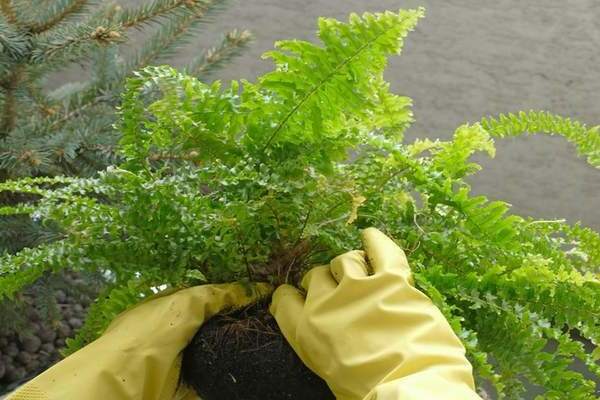

It is best to carry out planting work in spring, when the ground warms up enough, and the fern leaves are just about to turn around. Or it is necessary to do it at the beginning of autumn, when active growth stops.
When planting several plants at the same time, the distance between medium-sized varieties should be at least 40 cm.And the distance between tall and powerful bushes should be at least 70 cm.
Dig a hole slightly larger than the root system, or prepare a container with a drainage layer and sandy loam soil. Add a pinch of nitrogen fertilizer to the bottom, mix it with the soil so that there is no direct contact with the fern roots. Gently spread the roots in a hole or container, cover with earth, tamp a little and water liberally.
If you are planning to transplant a fern from the forest, then the planting algorithm is no different. There are just a few more steps to be taken before landing. Water the forest fern, then carefully dig up and remove the dried leaves. Try to transport the plant along with an earthen clod so as not to injure the roots. It is necessary to dig up the plant in the spring and immediately before transplanting. After planting the plant, be sure to water it.
Diseases and pests
Fern rarely encounters disease. They usually develop when the rules for caring for the plant are violated or when weeds are actively growing on the site.
Fungal infection
When a fern is infected with fungi, the leaves become yellow. Over time, they turn brown and die off. There is also a risk of a dark coating on the back of the leaves or damage to the central veins. In such a situation, the plant will have to be removed, and the infected soil will have to be dug up and discarded.
In simple cases, it is enough to treat the culture with chemicals - fungicides. In this case, dry and diseased leaves are recommended to be torn off and burned. Subsequently, the culture must be properly watered and loosened.
Bacterial infection
When a bacterial infection develops, the fern leaves are covered with brown or rusty spots. There is also a risk of pinpoint or concentric marks or watery formations. When such problems appear, the affected areas should be immediately cut off and burned.
The adjustment of the irrigation regime is of no small importance.
Shield
When these insects attack, brown shields appear on the leaves. Parasites accumulate under them. Falling leaves can also be noticed. To cope with the problem, pests should be removed with a brush. After that, it is recommended to treat the culture with soapy water. Infusions of garlic or walnut leaves are considered effective remedies.
Mealybug
When a bush is infected with these pests, the leaves are covered with a cotton-like bloom. Females of scale insects accumulate under it. Parasites are localized on petioles, flowers, leaves, trunk. Often they can be found in the axils of the leaves.
To cope with the problem, it is recommended to cut and burn the damaged areas, and remove the top layer of soil.
When a plant is infected with aphids, the fern leaves become sticky and misshapen. Parasites are usually localized on the seamy side of the leaves and accumulate in the axils. They can be of different colors - green, pink, black. When a crop is infected, insects absorb all the juices of the plant. As a result, it loses its decorative properties. In this case, the leaves are deformed and die off. In addition, aphids lead to the spread of viral infections.
To cope with parasites, the plant should be wiped with soapy water and treated with a solution of Chlorophos with a concentration of 3%. From folk remedies, you can use an infusion of tobacco or ash. In case of severe damage, the plant should be cut at the root. In most cases, the fern sprouts new growth and recovers over time.
How to reproduce?
Most often, the fern is propagated by dividing adult bushes. However, there are species that can be propagated by budding. It is advisable to engage in this procedure in early autumn. To do this, you need to choose a healthy and well-developed bush, bend it to the ground, and then pour on top of the moist soil along the edges, trying not to touch the central vein.
Also fern, including ostrich, reproduces well by spores. To do this, they need to be collected after flowering, laid out on paper, where they must dry thoroughly. Around the middle of January, they can already be sown in the substrate collected in the place where the fern grows.
The fern needs no special introduction, although not all of us have had the opportunity to see this plant. Despite this, it is very popular with gardeners who often try to make room for it in their garden. Growing an ostrich fern in the country is not such a difficult task as it might seem at first glance. Unlike other plants, it feels good in conditions of strong shading, and it is not particularly picky about soil fertility.
Taking care of him is also not difficult. You just need to ensure that the soil is always moist and loose.This is more than enough for this plant to show active growth every season and delight the gardener with its bright foliage.
Garden ferns
Tips & Tricks
In order for the fern to fully develop, it should be well looked after:
- water on time;
- loosening the soil;
- remove weeds;
- follow the rules for plant transplantation;
- carry out treatments for diseases and pests.
The fern is considered a very unpretentious plant that has excellent decorative properties. Today there are many varieties of culture that can be planted in the garden. To achieve success in growing a plant, it is necessary to provide it with high-quality and complete care.


